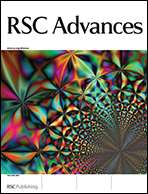Amberlite IR-120H as a recyclable catalyst for the synthesis of 1,8-dioxo-octahydroxanthene analogs and their evaluation as potential leishmanicidal agents
Abstract
Bioactive 1,8-dioxo-octahydroxanthene analogs were synthesized by employing Amberlite IR-120H as a recyclable heterogeneous catalyst in acetonitrile. Their in vitro cytotoxicities and leishmanicidal activities were evaluated. The synthetic protocol involves a Knoevenagel condensation followed by a Michael addition and finally a cyclodehydration of dimedone with an aldehyde. Among the solvents used for this protocol, acetonitrile gave the best results in terms of isolated yield. Being a one-pot reaction, this protocol presents several advantages over the previously reported methods in terms of its low cost, catalyst recyclability, atom economy, and convenient work-up in addition to the respectable resulting isolated yield. The non-cytotoxic nature of these 1,8-dioxo-octahydroxanthene analogs provides a safer route for related biological studies. Some of the prepared materials (3b, 3c, 3d, 3e and 3g) showed significant leishmanicidal activity against Leishmania major (DESTO) promastigotes in comparison to the standard compound, pentamidine.


 Please wait while we load your content...
Please wait while we load your content...